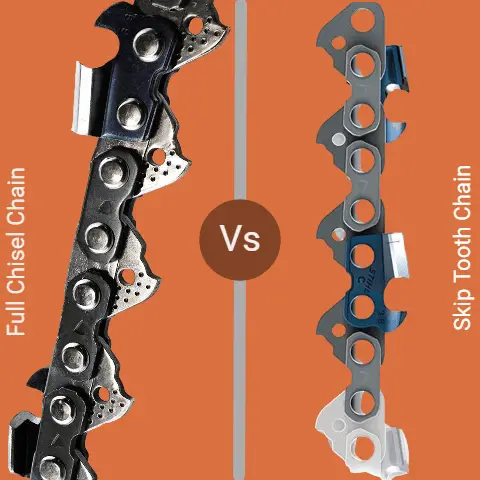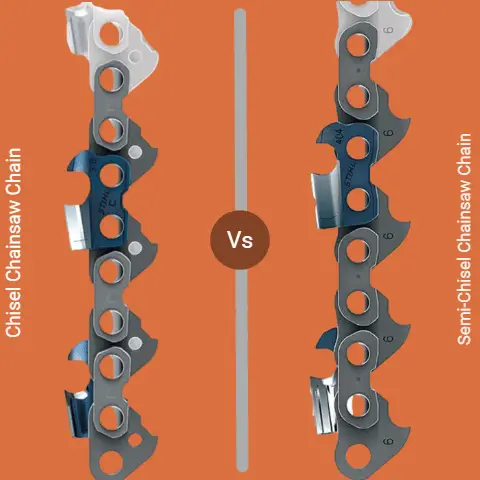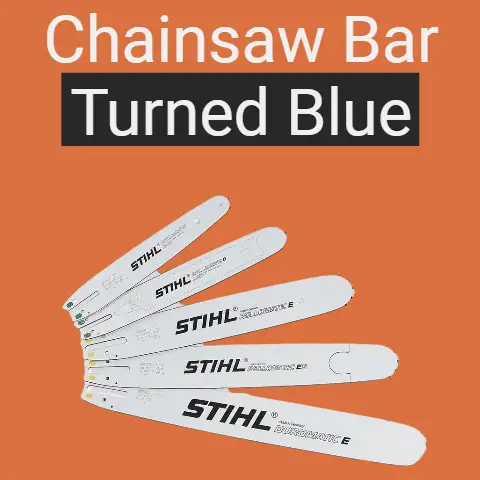Chainsaw Blade Types That Stay Sharp For Months (Upto 3+)
According to Design, the types are – Round Chain, Square Tooth Round Ground & Square Tooth Square Ground. According to use, the types are – 3/4/5 Prong, 20-40 Prong, and 80-100 teeth blades.
The Author
The chainsaw blade is the lifeblood of the machine…as it is responsible for its cutting and sawing prowess.
With chainsaws ranging in power and size, blades also come in different types.
Learn more about the numerous styles by reading on.

Comparsion Table
| # | Name | Type | Length | Compatible with | Price |
|---|---|---|---|---|---|
| 1 | Oregon S56 AdvanceCut | Semi-chisel | 16-Inch | Craftsman, Echo, Homelite, Poulan, Remington | Check Price |
| 2 | Stihl Oilomatic Duro | Carbide | 20-Inch | Various Stihl Models Including: 025, MS 250, MS 251 | Check Price |
| 3 | WoodlandPRO | Carbide | 14-Inch | Various Chainsaws including Stihl | Check Price |
| 4 | Loggers Art Gens | Semi-chisel | 16-Inch | Craftsman/Sears, Echo, Homelite, McCulloch, Poulan, Worx, Chicago | Check Price |
The Basics
Before you go shopping for the best chainsaw blade, you first need to know the three important numbers concerning blades. They are:
Pitch
- Pitch is the measurement between any three consecutive rivets on a chainsaw chain, divided by two. It is the distance between the rivets on the chain, the powerhead drive sprocket teeth, and the guide bar spur sprocket teeth. The pitch determines the spacing between the chain’s drive links and must match the spacing between the teeth on the bar tip sprocket and drive sprocket.
- There are six common saw chain pitch variations available. The most common size sold worldwide is 3/8″ pitch, while 1/4″ pitch is mainly fitted to electric or low-powered saws. .325″ and 3/8″ Low Profile (LP) are both fitted to small to mid-range chainsaws, with 3/8″ LP also referred to as Stihl Picco. .404″ pitch is fitted to large chainsaws generally over 90cc motor capacity. 3/4″ pitch is used on hydraulic-driven mechanical tree harvesters and commercial docking machines, not on hand-operated chainsaws.
- A larger pitch indicates a heavier and bigger chain, which typically requires more power to operate. Larger pitch chains often have larger teeth that take bigger cuts out of the wood.
- The pitch measurement is often printed on the chainsaw bar’s tail, the chain’s drive link, in the operator’s manual, or on the rim of the spur on the chainsaw. It can also be stamped on the drive sprocket or the clutch drum of the chainsaw. If you are uncertain about your chain’s pitch size, it is advisable to contact your nearest dealer for further support.
Drive Links
The number of these links needs to be known if you want to get the right kind of chainsaw blade.
The act of counting drive links is done manually; it is not readily available in the box or the manual.
Gauge
This measurement is characterized by the drive links’ thicknesses.
Kinds of Chainsaw Blades According to Design
Similar to chainsaw chain types, there are different types of blades.
Now that you know the different measurements involved in chainsaw blades, you can now familiarize yourself with their various styles:
1. Round Chain
Of all the blades, the round chain is known to stay the sharpest for the longest period.
It’s also the most durable of all, mainly because it has a larger, well-supported tooth.
Apart from its sharpness and durability, this blade is the easiest to sharpen.
Even if you are a newbie, you can sharpen a round chain easily with the use of a round file.
2. Square Tooth Round Ground
On most saws, the square tooth round ground blade is known to have 10-15% better efficiency.
It utilizes a smaller amount of power, yet it can easily cut away through wood fiber.
Like a round chain blade, the square tooth round ground is easy to maintain because it can be sharpened easily with a round file.
Although it performs better than a round chain, it does not stay sharp for long.
3. Square Tooth Square Ground
When it comes to blades, the best proves to be the square tooth square ground, as it performs 20-25% better than the traditional round chain.
When it is at its sharpest, it can trounce the two others in cutting efficiency.
To keep your square tooth square ground performing well, you need to sharpen it with a special file.
But if you know about using a special square grinder, you can go ahead.
Because of the challenges associated with maintaining a square tooth square ground, this is not recommended for most users.
Kinds of Chainsaw Blades According to Use
With the many uses of chainsaws, it comes with blades that vary according to use. They are:
3-Prong / 4-Prong / 5-Prong
Best for pruning soft weed, these designs are characterized by cutting edges. Because of its basic design, it dulls easily.
Most 3/4/5-prong blades are made of basic steel, and not the unfaltering carbide that most blades are made from.
Twenty to Forty-Prong Blades
Perfect for cutting thick heavy brushes and heavy stock weeds, 20 to 40-prong blades promise better cutting force.
They need to keep sharp or they will get stuck on the branches.
Eighty to Hundred-Teeth Blades
Because of its immense number of teeth, it is perfect for most jobs in the garden.
It stays sharper for a long time, but if you want to get the best value for your money, opt for a carbide-made blade.
Final Thought
When it comes to picking the best chainsaw blade, what you need to know is that you have to rely on several factors.
Keep in mind the saw you use, the work that you do and the way you sharpen your chain (among many others) before you purchase a new blade for your device.






